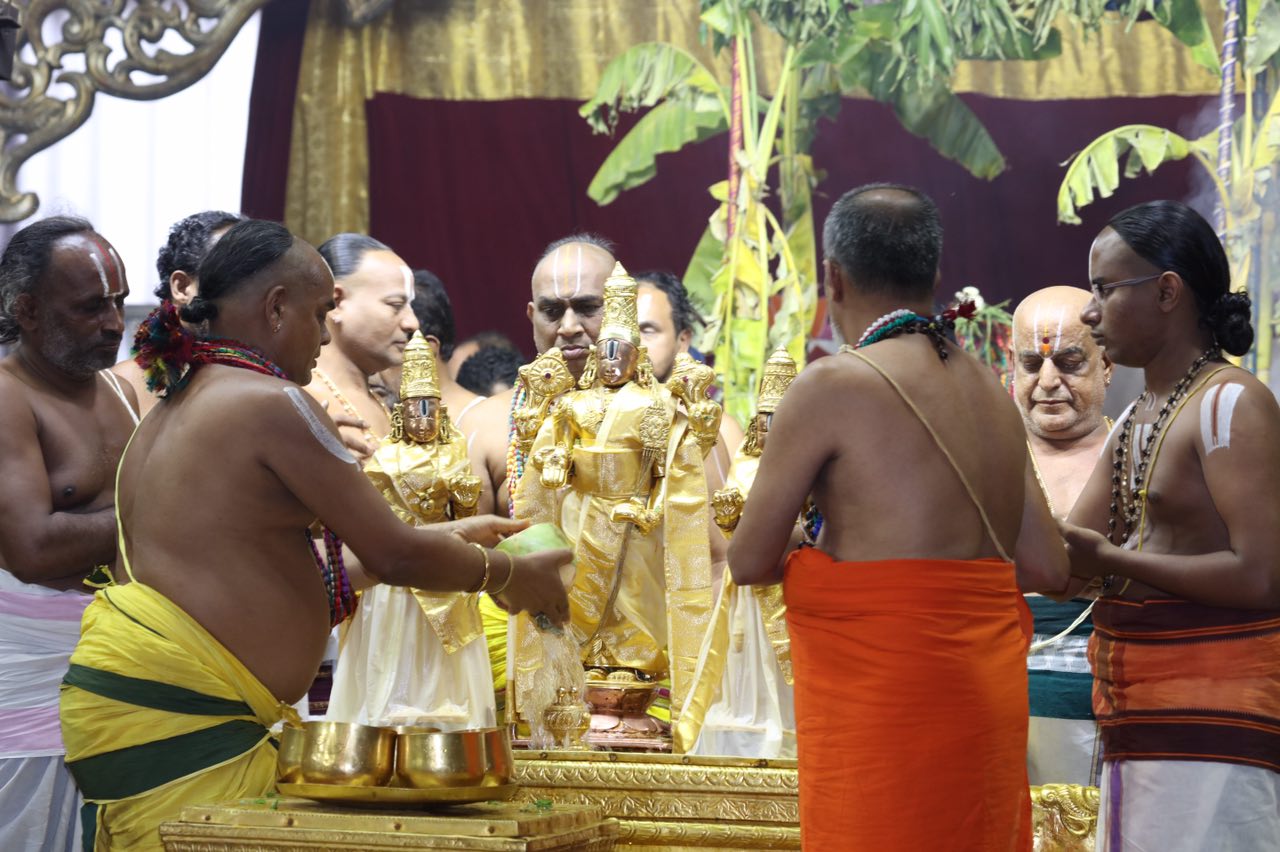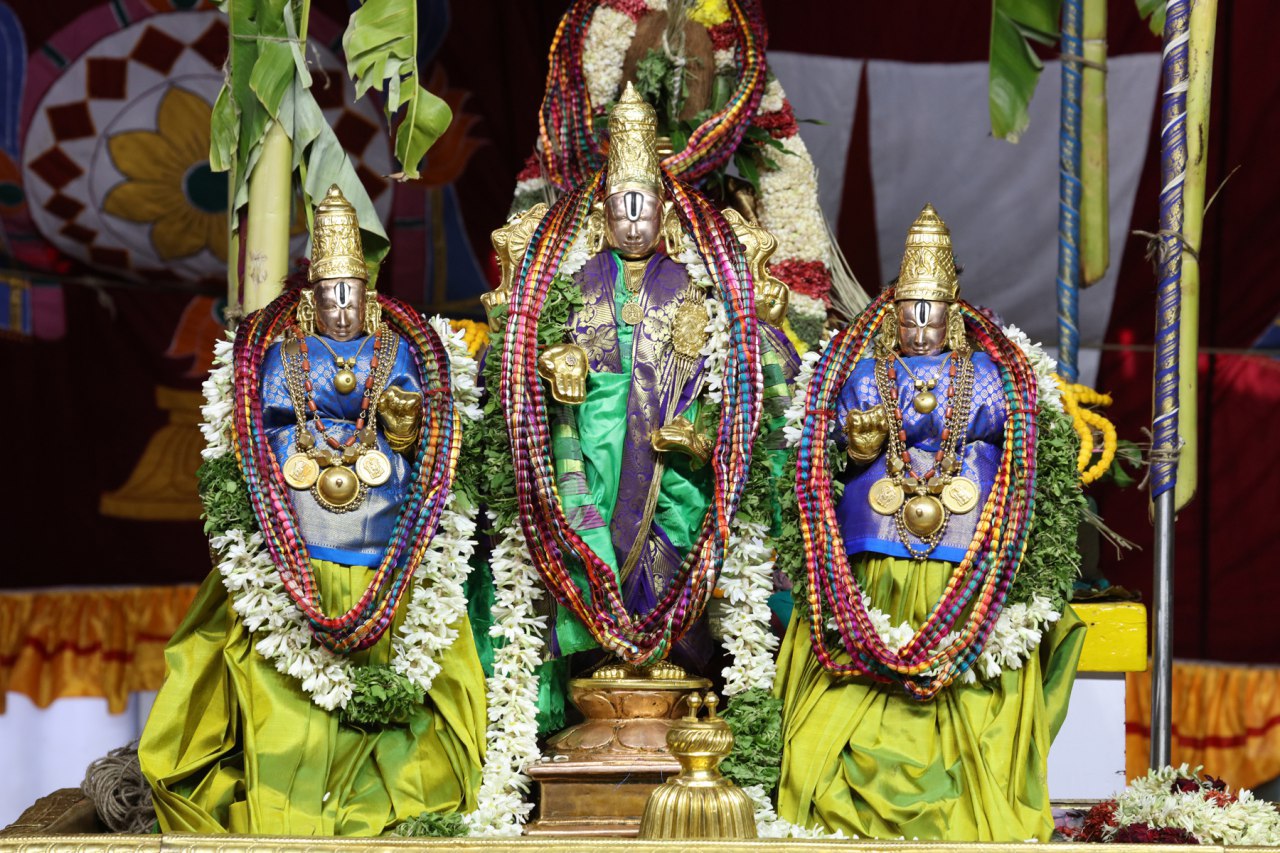Table of Contents
TogglePavithrotsavam - Festival of Purification - Three days event
As per the Vedic tradition, one is not supposed to enter the temple with jatashoucham (impurity due to birth offspring) and mrithashoucham (impurity due to death of close relatives).
But sometimes, this rule is violated knowingly or unknowingly by the devotees and staff. A purification ceremony that takes place to dispel the evil of such lapses is called Pavithrotsavam.
There is evidence to suggest that Pavithrotsavams were conducted till the 15-16 centuries in Tirumala. It stopped abruptly later. The temple has restored the practice since 1962. It takes place every year in the Kalyana Mantapa during Shravana Shuddha Dashami, Ekasadhi, and Dwadashi.

Snapana Tirumanjam to the Lord (Celestial Bath)

Instituted by Saluva Mallaiah Deva Raja
- On the first day, there will be consecration* of pavitras*, homas besides abhishekas for Sri Malayappa Swami and his consorts.
- On the second day, the pavitras are offered to the deities in the temple and the premises.
- On the third day, there will be purnahuti*
Procession of Swamy
On these 3 days, there will be a procession of Sri Malayappa Swami after the worship in the evening. Devotees can participate in this seva on payment of required fees.
- *purnahuti - Final offering to the sacrificial fire of a coconut, nine kinds of grains, five precious metals, betel leaves, sandalwood sticks, etc. bundled in a silk cloth while chanting specified mantras
- *consecration - Dedication to a special purpose or service, usually religious
- *pavitras - rings made of sacrificial grass
KALYANOTSAVA MANDAPAM
Earlier all wedding festivities of the Lord were celebrated at the pavilion in the ‘Vimana Pradakshinam’. With the increase in the number of devotees attending the events, these festivities started being held for some time in Ranganayaka Mandapam.
Now the wedding festivities of the Lord Malayappa swami Varu are celebrated at this pavilion.
Now, hence this place is called Kalyanotsava Mandapam. This prakaram, in the olden days, was called Sampangi Praakaram, which is between the outer and inner prakarams of the temple. Pavithrotsavam, Pushpayagam, and Jyestabhisekham are also performed here in this Kalyanotsava Mandapam.
